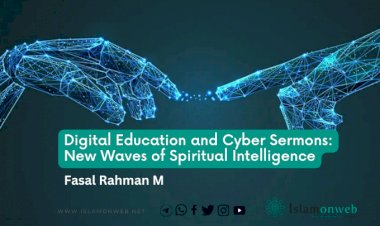Strategies to Enhance University Students' Classroom Performance: Tips of Lecturers
I have conducted a survey among undergraduate students at the International Islamic University Malaysia (IIUM) to assess their awareness of their own challenges and to solicit potential solutions.
The survey received 200 responses, with 124 female and 76 male participants. Participants were queried about methods through which educators could enhance students' classroom performance.
From the 200 responses gathered, I have identified four specific forms of assistance that students consider effective strategies for educators in helping them overcome the challenges mentioned above. I categorized these four as "Major Steps" because they were consistently mentioned by a significant number of students, albeit in different phrasings. The strategies listed under "Additional Steps" were also suggested by students, though the number of students recommending them is lower compared to the Major Steps.
Major Steps
- Moral Support and Motivation:
Many students reiterated that a lecturer's significant contribution lies in providing motivation, encouragement, and support to enhance their learning journey. They expressed a desire for more than just academic guidance, seeking practical tips, tricks and moral support to face life's challenges and become better individuals. Like anyone else, students highly appreciate feedback—both positive and constructive—as it fuels their drive to excel in their respective areas.
Motivational words from lecturers play a crucial role in connecting studying to personal desires with a positive mindset, paving the way for meaningful teacher–student relationships. The emotional support experienced through the demonstration of genuine concern and care for students, coupled with respect for their individual uniqueness and a sincere desire to understand their feelings and perspectives, is crucial.
In today's university environment, the relationship between lecturers and students often adheres strictly to formalities, lacking personal engagement in students' affairs. Occasionally, an artificial gap is imposed, leading to a distinct separation where interactions are confined to 'pure' academic matters.
This detachment undermines the essence of education. To counter this challenge at IIUM, proactive measures have been taken by assigning lecturers the role of "Murabbi," charged with the responsibility of tarbiyah—that is, the holistic care and nurturing of students. The university explicitly outlines in its appointment letter that academic staff members are not only expected to provide guidance in academic matters but also to extend their counsel regarding character, behaviour and moral conduct. In fact, the lecturer is described as "not merely a teacher (Mu’allim) or a scholar (‘Alim) but also a moral educator (Murabbi)" (Islamonweb).
Students expressed that an optimistic and unbiased view of students signifies approachability on the part of lecturers. When lecturers are approachable, they become a source of assistance without judgment. Addressing individual weaknesses and introducing confidence-building exercises were identified as constructive strategies. An approachable demeanour and easy accessibility are two additional components that many students find appealing. A 'super strict nature' helps no one because it widens the gap and results in alienation.
Amidst the escalating mental health crisis among young people, the need for emotional investment from teachers has become more imperative than ever. Classrooms must be safe and healing spaces for students to learn and experience new things.
- Engaging Classrooms with a Sense of Enjoyment:
Numerous students have expressed the desire for the classroom to be fun-filled and engaging, urging an atmosphere that is not overly serious or linear. They seek class activities that are not only exciting but also relevant to the topics being taught, forming a sense of joy. Dull classes, they contend, impose additional burdens on students. They argue that when learning is enjoyable, it captures student attention and keeps them curious. Having fun can enhance students’ memory, attention and motivation.
- Sustained Interaction:
Several students suggested that the more interactive the class, the more engaged and interesting it becomes. Incorporating quizzes, encouraging questions and answers, soliciting student opinions, sharing stories, allowing students to share their experiences, and prompting them to draw conclusions are crucial aspects of an engaging class. Additionally, asking students to read slides or books aloud during classes enhances participation and learning. Likewise, leveraging group discussions and open forums to facilitate a more interactive learning experience proves effective in encouraging students to actively share their thoughts and ideas. To promote proactive learning habits, lecturers can assign questions based on previously discussed articles or books, providing a nudge for students to establish study routines.
Inactive students also deserve the opportunity to express themselves, even if it requires additional encouragement. Facilitating interaction through class exercises and competitive tasks related to the covered topics can be effective. Without such engagement, students may be physically present in class but mentally disengaged, eagerly awaiting its conclusion. In such instances, the classroom transforms into little more than a ‘cage’.
- Enhanced Explanation through Real-life Examples:
A prevalent challenge shared by students is the rapid pace of lectures, possibly due to the need to cover extensive content before exams. This pace negatively impacts student understanding, with many either lagging behind or lacking an overall comprehension of the course. Students express the need for explanations at a manageable pace, complemented by illustrative examples and exercises, besides thought-provoking questions during lectures. Clear and comprehensive explanations are considered indispensable, particularly for those facing focus issues while reading. Suggestions include integrating practical, real-life examples to enhance overall comprehension.
The bottom line is that teachers need to include pauses, emphasize key points, and incorporate visual aids to enhance the overall effectiveness of the lecture.
Additional Steps
Other than the above, the students have suggested several other key points which they expect from the educators, which are grouped below:
- Supplemental Resources and Study Tools:
Sitting through a one-hour (or more) lecture can be a monotonous experience for many. Therefore, it is crucial to explore a range of methods to effectively engage students. Utilizing videos during the class is a recommended option to break the routine and offer a different perspective on the subject matter. Another effective strategy is to share relevant articles related to the lecture topic. Discussing these articles and providing insights will cultivate critical thinking and analytical skills among students.
Creating study tools, such as concise summaries and mind maps, offers a structured and visual representation of information, facilitating easier review and retention of key points.
2. Engaging Presentation Techniques:
Classroom slides should be regularly updated and enhanced to be visually appealing and attention-grabbing. Investing in visually appealing presentations can contribute significantly to capturing students' attention. Additionally, teaching and guiding students on effective notetaking during lectures can assist them in better understanding and retaining the material.
3. Group Discussions and Real-World Examples:
Group discussions around challenging subjects allow students to explain concepts to one another and collaborate in understanding complex topics. Another method involves elucidating theories and points by relating them to real-world examples, current events and everyday life situations. This approach helps students connect theoretical knowledge to practical scenarios.
4. Simple Language:
Language considerations are crucial, particularly for non-native speakers. Lecturers should employ straightforward language when explaining subjects or readings to ensure clarity and minimize confusion. Utilizing multiple words and synonyms can be helpful for students.
5. Reading Culture:
Offering compelling book recommendations and conveying enthusiasm for reading during classes can motivate students to delve into suggested readings. Simplified versions of lengthy books, paired with individual book reviews as assignments, cater to tight schedules and limited reading resources. Additionally, sharing personal experiences and reviews of recently read books by lecturers encourages students to explore them.
Conclusion
In conclusion, it is crucial to acknowledge the significance of listening to students in order to understand their challenges and perspectives in finding solutions. As the immediate partners in students’ educational journey, it becomes essential for educators to actively evaluate and consider implementing the strategies suggested by students in their care.
About the author Dr. Sayyed Mohamed Muhsin is Assistant Professor of Islamic jurisprudence at the International Islamic University Malaysia (IIUM), Kuala Lumpur. He also serves as Editor-in-Chief of Islamonweb-English (https://en.islamonweb.net/)
(It is initial and abridged version was published in The Sun News Paper on 4-3-2024)
Disclaimer
The views expressed in this article are the author’s own and do not necessarily mirror Islamonweb’s editorial stance.
23 Comments
-

"Discussing these articles and providing insights will cultivate critical thinking and analytical skills among students." I firmly agree of what have been mentioned by the author to provide a proper supplemental & tools for students in class. This would avoid students from keep being bored in class or sleepy.
-

As per mentioned in the article, these strategies are undoubtedly really helpful for the students to keep focusing in class. In my situation, I think the best way for an educator to do is to find some points or arguments that can pique interest of the students which suitable to be an intro of the topics that will be discuss in the class, so that the students will instantly focus on the lectures.
-

For me, distractions during lectures occur when I get stuck because the lecturer uses complex language to explain something. This causes me to fall behind and lose focus as I struggle to understand the meaning. Based on the previous article, I agree that using simple and straightforward language is an effective strategy to reduce confusion. It also makes it easier for student to follow and understand the lectures.
-

The important in learning is reading again and again about the lesson. This is because if we just focusing lesson in the class without relearn the lesson we will forget the lesson. Other than that we need to understand the knowledge so that we can relate it to our life especially in Fiqh. The knowledge that we learned will help us in facing the issues that happened today.
-

In order to overcome students’ distractions i thinking of it is come from ourselves first, if we don’t have the strong intentions towards knowledge then we are humiliating the knowledge that have been delivered. As for that i love the idea of having a group discussion or maybe the two way communication in class, where student give their opinions, or discussing the subject with each other. Wallahu A’lam
























Leave A Comment